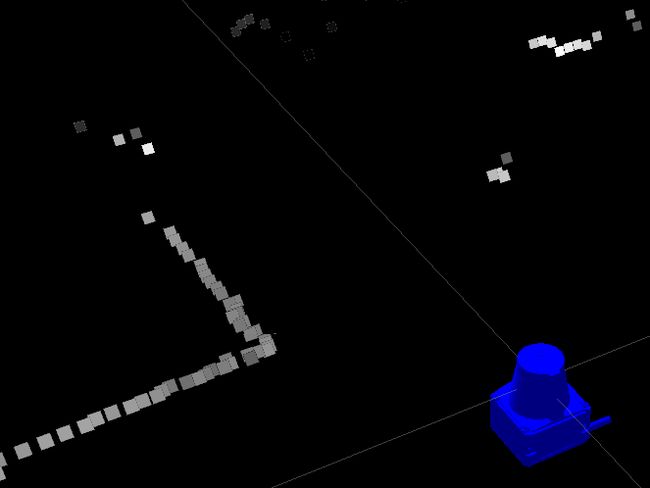sick_tim
A ROS driver for the SICK TiM series of laser scanners.
Source: git https://github.com/uos/sick_tim.git (branch: kinetic)
Choosing the right branch
Choose the branch named according to your ROS version (e.g. fuerte, groovy...). One exception is hydro, for which there are two branches: hydro for rosbuild, or hydro_catkin for Catkin (recommended). From indigo on, Catkin will be the only supported option.
Supported scanner types
This package provides one node for each supported type of scanner (all nodes provide the same features). The model name and part no. can be found on the side of the scanner. Since all scanners of the TIM line look alike, this is the only reliable way of identifying your device.
If your TIM scanner is not listed below, just try out whether one of the nodes works for you. If it does, drop us a mail, so we can add that model to the list. If it doesn't, open a Github issue, and we'll try to add support.
Node: sick_tim310s01
Model Name: TIM310-1030000S01
Part No.: 1056791
Web site: link
This is the "special edition" of the TIM3xx line. It was developed on request and officially supports ranging (i.e., there is a specification of the datagram format).
Frequency: 15 Hz, range: 4m. Range + intensities.
Node: sick_tim310
Model Name: TIM310-1030000
Part No.: 1052627
Web site: link.
This is the standard edition of the TIM310. It does not support ranging (only detection). There was a firmware bug in versions prior to V2.50 that allowed ranging output, and this node works with those firmware versions. All newer firmware versions will not work.
Frequency: 1.875 Hz, range: 4m. Range + intensities. (This is a little strange, because according to the specs, frequency should be 15 Hz).
Node: sick_tim310_1130000m01
Model Name: TIM310-1130000M01
Part No.: 1062563
Web site: none
Only available as a sample device (?). Angular resolution: 3°, no intensities. Will probably be rebranded as TIM-510.
Frequency: 15 Hz, range: 4m. Only range, no intensities.
Node: sick_tim551_2050001
Model Name: TIM551-2050001
Part No.: 1060445
Web site: link
Frequency: 15 Hz, angular resolution: 1°, range: 10m. Range + intensities.
Other devices tested to work with this node (both TCP and USB, where available):
TIM351-2134001 only works with firmware revisions prior to V2.50 (cf. Issue)
TIM561-2050101
TIM571-2050101 (P/N 1075091); frequency: 15 Hz, angular resolution: 0.333°, range: 25m; see sick_tim571_2050101.launch
ROS API
sick_tim
Published Topics
scan
(sensor_msgs/LaserScan)The published laser scans.
datagram
(std_msgs/String)The datagrams as received from the scanner (for debug purposes). Is only enabled when the publish_datagram param is set.
Parameters
Dynamically Reconfigurable Parameters
See the dynamic_reconfigure package for details on dynamically reconfigurable parameters.
~min_ang
(double
, default: -2.35619449019)The angle of the first range measurement [rad]. Range: -2.35619449019 to 2.35619449019
~max_ang
(double
, default: 2.35619449019)The angle of the last range measurement [rad]. Range: -2.35619449019 to 2.35619449019
~intensity
(bool
, default: True)Whether or not to return intensity values. RSSI output must be enabled on scanner (see "Enabling intensity (RSSI) output").
~skip
(int
, default: 0)The number of scans to skip between each measured scan. Range: 0 to 9
~frame_id
(str
, default: laser)The TF frame in which laser scans will be returned.
~time_offset
(double
, default: -0.001)An offset to add to the time stamp before publication of a scan [s]. Range: -0.25 to 0.25
~auto_reboot
(bool
, default: True)Whether or not to reboot laser if it reports an error
Not Dynamically Reconfigurable Parameters
~hostname
(string
, default: None)Enables TCP (Ethernet) instead of USB connection; hostname
is the host name or IP address of the laser scanner (only valid for TiM551)
~port
(string
, default: "2112")TCP port used (only evaluated if hostname
is set).
~publish_datagram
(bool
, default: False)Only for debug purposes: enables publishing messages on the /datagram
topic (see above).
~subscribe_datagram
(bool
, default: false)Only for debug purposes: If set to true
, enables subscribing to the /datagram
topic (instead of reading from the physical device). Useful to debug datagrams from a rosbag that was previously recorded using the publish_datagram
param.
Before starting
See the udev/README
file in the package directory.
USB vs. TCP (Ethernet) connection
By default the node will try to use the USB connection. To use the ethernet connection instead (for those scanners that have one), you have to set the parameter "hostname" to the scanner hostname or IP (see commented out part in the respective sick_tim/launch/sick*.launch files).
The scanner IP can be changed using the SICK SOPAS-ET configuration software.
In case of problems, make sure your PC is on the same network as the scanner and that you can ping the scanner from your PC.
Enabling intensity (RSSI) output
To reduce data rates, some scanners (e.g., the TiM 571) don't send RSSI data by default. It must first be enabled in the configuration software by downloading SOPAS-ET 3.2.0, connecting to the sensor using USB or Ethernet, logging in (UID: Authorized Client, PWD: client), and clicking the checkbox shown below:
Quick start
roslaunch sick_tim sick_tim551_2050001.launch
Now you can visualize the /scan
topic using rviz. Enjoy!
Report a Bug
Use GitHub to report bugs or submit feature requests. [View active issues]
Enable publish_datagram
in the launch file, by moving it out of the xml comments () and setting it to true:
roslaunch sick_tim sick_timXXX.launch
(in a new terminal:) rosbag record --limit=50 --bz2 /scan /datagram /diagnostics
Attach the resulting bag file to the bug report.

